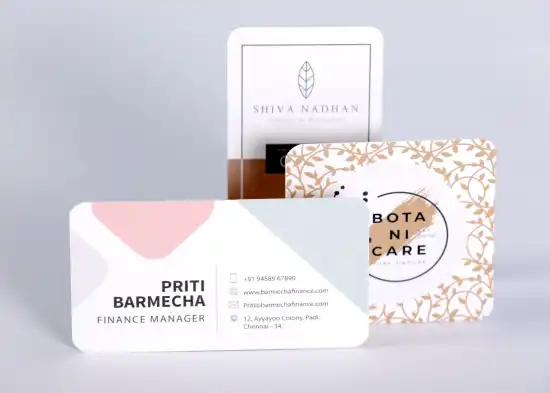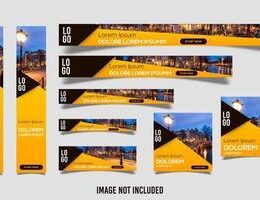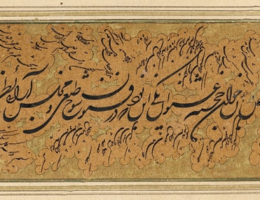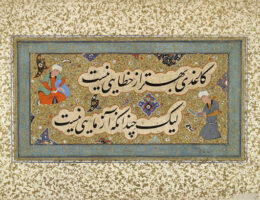IRAN ART EXHIBITION: WHAT’S THE STORY BEHIND VISITING CARDS?
A visiting card, also known as a calling card, is a small card used for social purposes. Before the 18th century, visitors making social calls left handwritten notes at the home of friends who were not at home. By the 1760s, the upper classes in France and Italy were leaving printed visiting cards decorated with images on one side and a blank space for hand-writing a note on the other. The style quickly spread across Europe and to the United States. As printing technology improved, elaborate color designs became increasingly popular. However, by the late 1800s, simpler styles became more common.
By the 19th century, men and women needed personalized calling or visiting cards to maintain their social status or to move up in society. These small cards, about the size of a modern-day business card, usually featured the name of the owner, and sometimes an address. Calling cards were left at homes, sent to individuals, or exchanged in person for various social purposes. Knowing and following calling card “rules” signaled one’s status and intentions.
History
Visiting cards became an indispensable tool of etiquette, with sophisticated rules governing their use. The essential convention was that a first person would not expect to see a second person in the second’s own home (unless invited or introduced) without having first left his visiting card at the second’s home. Upon leaving the card, the first would not expect to be admitted initially but instead might receive a card at his own home in response from the second. This would serve as a signal that a personal visit and meeting at home would be welcome. On the other hand, if no card was forthcoming, or if a card was sent in an envelope, a personal visit was thereby discouraged.
As an adoption from France, they were called une carte d’adresse from 1615 to 1800 and then became carte de visite or visiteur with the advent of photography in the mid-19th century. Photographic cartes de visite or “CdVs” were not generally used as calling cards: they did not have the owner/sitter’s name printed on them, since they were normally given to family and close friends, or were of celebrities.
Visiting cards became common among the aristocracy of Europe, and also in the United States. The whole procedure depended upon there being servants to open the door and receive the cards and it was, therefore, confined to the social classes which employed servants.
If a card was left with a turned corner it indicated that the card had been left in person rather than by a servant.
Next day Paul found Stubbs’ card on his table, the corner turned up. Paul went to Hertford to call on Stubbs but found him out. He left his card, the corner turned up.
IRAN ART EXHIBITION: Some visiting cards included refined engraved ornaments, embossed lettering, and fantastic coats of arms. However, the standard form of visiting card in the 19th century in the United Kingdom was a plain card with nothing more than the bearer’s name on it. Sometimes the name of a gentlemen’s club might be added, but addresses were not otherwise included. Visiting cards were kept in highly decorated card cases.
The visiting card is no longer the universal feature of upper-middle-class and upper-class life that it once was in Europe and North America. Much more common is the business card, in which contact details, including address and telephone number, are essential. This has led to the inclusion of such details even on modern domestic visiting cards: Debrett’s New Etiquette in 2007 endorsed the inclusion of private and club addresses (at the bottom left and right respectively) but states the inclusion of a telephone or fax number would be “a solecism”.
According to Debrett’s Handbook in 2016, a gentleman’s card would traditionally give his title, rank, private or service address (bottom left), and club (bottom right) in addition to his name. Titles of peers are given with no prefix (e.g. simply “Duke of Wellington”), courtesy titles are similarly given as “Lord John Smith”, etc., but “Hon” (for “the Honourable”) are not used (Mr, Ms, etc. being used instead). Those without titles of nobility or courtesy titles may use ecclesiastical titles, military ranks, “Professor” or “Dr”, or Mr, Ms, etc. For archbishops, bishops, deans, and archdeacons, the territorial title is used (e.g. “The Bishop of London”). Men may use their forenames or initials, while a married or widowed woman may either use her husband’s name (the traditional usage) or her own. The only post-nominal letters used are those indicating membership of the armed forces (e.g. “Captain J. Smith, RN”). The Social Card, which is a modern version of the visiting card, features a person’s name, mobile phone number, and email address, with an optional residential address rarely included; family social cards include the names of parents and children.
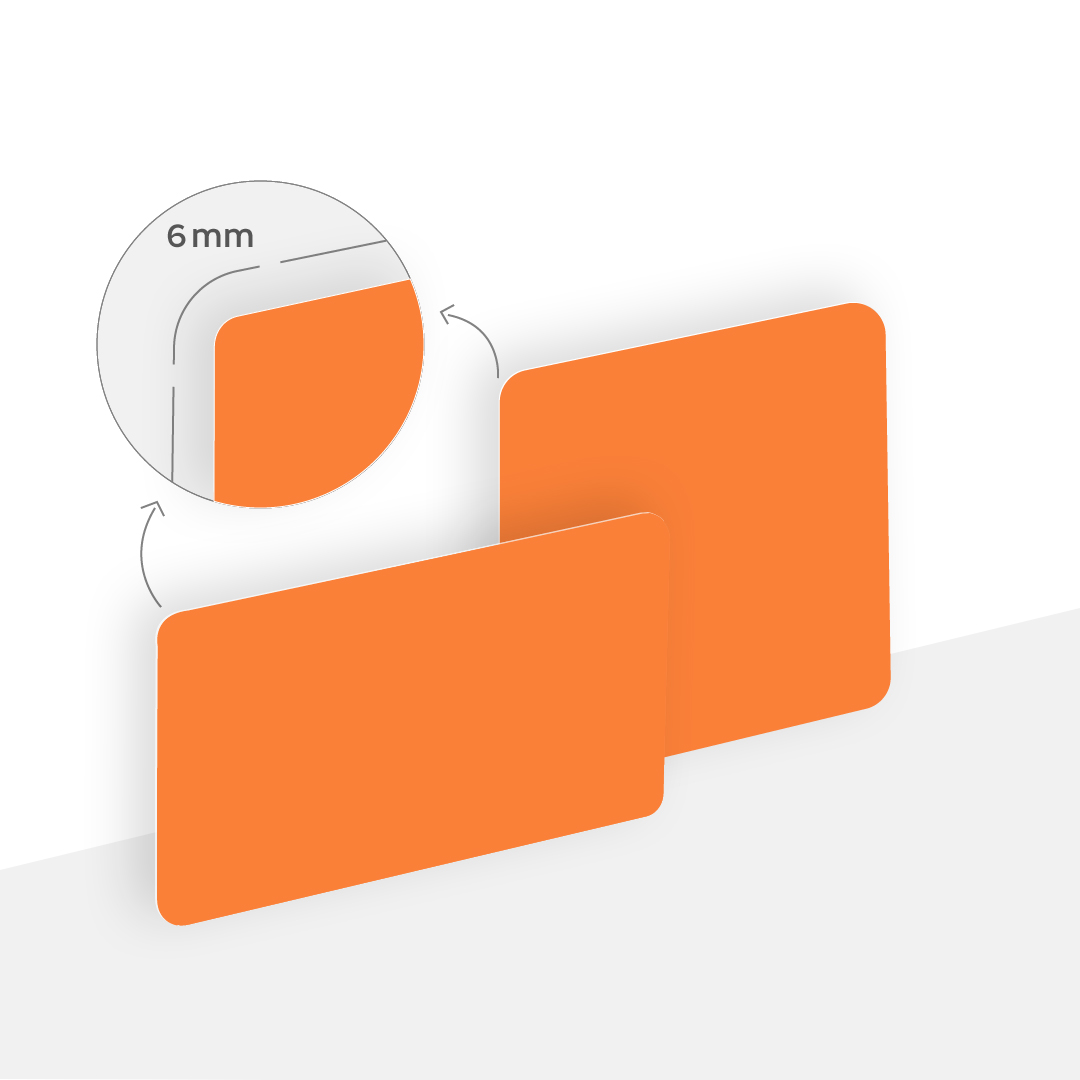
IRAN ART EXHIBITION: A visiting card is not a business card. Although they are similar, the two types of cards have different purposes. Making your business cards do double duty as visiting cards can leave the wrong impression. So what exactly is a visiting card and how is it different from a business card?
To understand how they differ from business cards it helps to know their history. Visiting cards were used by nobility when they made social calls. When they arrived, they or their servant would hand the card to their host’s doorman to announce their arrival. Different sources trace their origin to Europe or to China, but what we know is that by the 18th century, they were considered essential for gentlemen throughout the western world. Visiting cards are also known as calling cards, although the term ‘calling card’ has developed a different connotation over the years and now refers more to someone’s distinctive style, traits or actions.
Today, a visiting card can include your company’s name and logo, but it would have fewer details about the business. A business card primarily represents the company, whereas a visiting card focuses on the individual. And that is what influences how each type of card is used.
When to Use a Visiting Card instead of a Business Card
A business card is all business. If you want to give someone a way to contact your business, whether it is your own company or your employer, a business card is ideal. It can include your name, email and direct phone line, but its function is to encourage and facilitate someone to contact the company. Usually, the individual who handed them the card is not the only person who could help them at the business.
A visiting card is more personal. They can still be used in a purely social setting, or they are appropriate for softer business purposes where you are striving to make a more personal connection.
IRAN ART EXHIBITION: They also hit the right note for people who are not a business per se but who need a way for others to contact them. Artists and craftspeople who sell their works are not necessarily a business, but they do have occasions where they need a convenient way to pass along their contact details. Writers, tutors and public speakers can also use visiting cards this way.
Their original purpose might have evolved, but visiting cards can still be used to announce your arrival. You might not be calling to the estate of a noble family, but if you are calling in anywhere you are not already personally known, a visiting card can be a handy way for a receptionist to pass along your details to the professional you wish to see, whether you are there as a supplier, a customer or an industry colleague.
